This is a continuation of Workbench: Part 3 – Change of plans.
Time to glue it all up.
My worbbench/outfeed/assembly table has a torsion box top so it makes a good surface for gluing something like this up. I have a 1/8″ thick piece of hardboard that serves as a sacrificial top but I would still prefer to avoid gluing the pieces to that if at all possible. To help with this, I taped down a layer of wax paper to the benchtop.
I decided to do a little distressing before the glue-up. This could have waited till after but I was anxious to try out a technique I picked up. I made what I call a Smackem Stick. It is just a piece of wood with a handful of screws sticking through it. I used a cut off from another project. Ignore the groove running the length of the side. After I made this, I proceeded to beat the hell out of the boards. After the stain is applied, these should hopefully look like worm holes. since this is oak that I’m working with, these screws didn’t go too deep.
I wanted to try out the stain so I grabbed one of the sample boards that I did some experimenting on earlier and applied some Kona stain. I will go over this stain technique later when I do the entire table top.
I laid out the first row. I was careful to make the seams on the side of the boards that are facing the second row nice and flat.
I then attached the second row and clamped it together to dry. When I inserted each piece, I put a line of glue in the small groove in the right side, then I inserted the following piece into that, being sure to put glue in it’s groove as well, and so on until the last piece which I didn’t do this to since it’s the last piece in the row.
After letting the first two rows dry for at least an hour, I took the clamps off and put on the third row in the same way.
After the third row dried, I realized that it would be easier to clamp these if I cut off the tongue on the front row since I won’t be using that anyway.
This made for a nice flat surface to clamp to. I should have done this before gluing any of this together but it doesn’t hurt anything to have waited til now.
Once I got to the sixth row, my quick-release clamps would no longer reach so I switched to my bar and pipe clamps.
For the eleventh and final row I needed to get creative with my bar clamps since they aren’t quite long enough to reach.
In the end, it glued up okay. The pieces have some gaps in them on some of the edges. This is why they weren’t used on the floors, but for a project like this they add character.
The next step is cutting it down to a workable piece. We’re still planning out the legs and possible drawers. Also, I noticed that this piece has a slight bow to it from front to back. I’m not surprised at this, but it means that I may have to attack a backer board to the underside and make some sort of border to hide it. That should be in the next article.
If you have any questions or comments, please leave them below. I’d love to hear from you.
Back to Workbench: Part 3 – Change of plans.

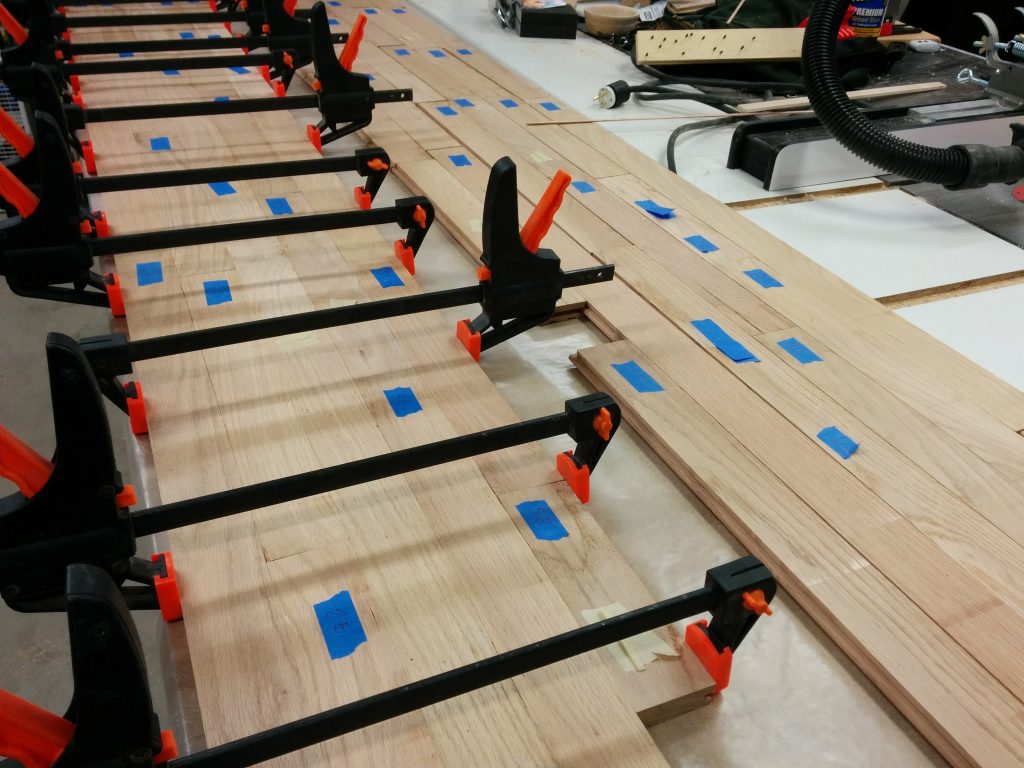
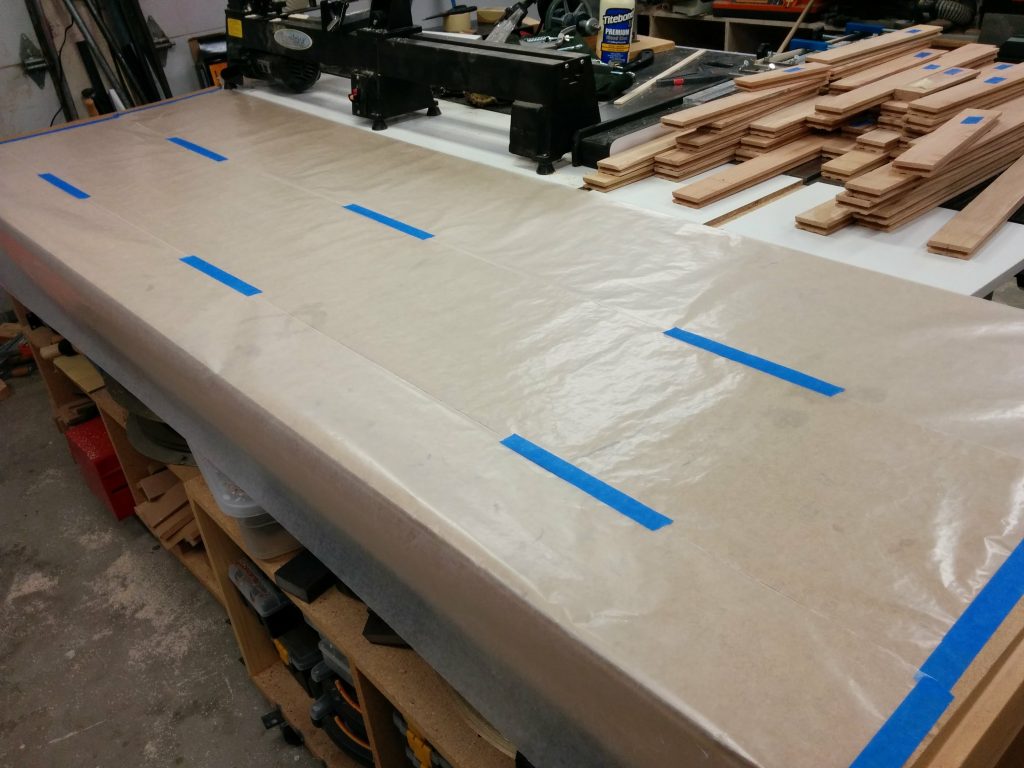
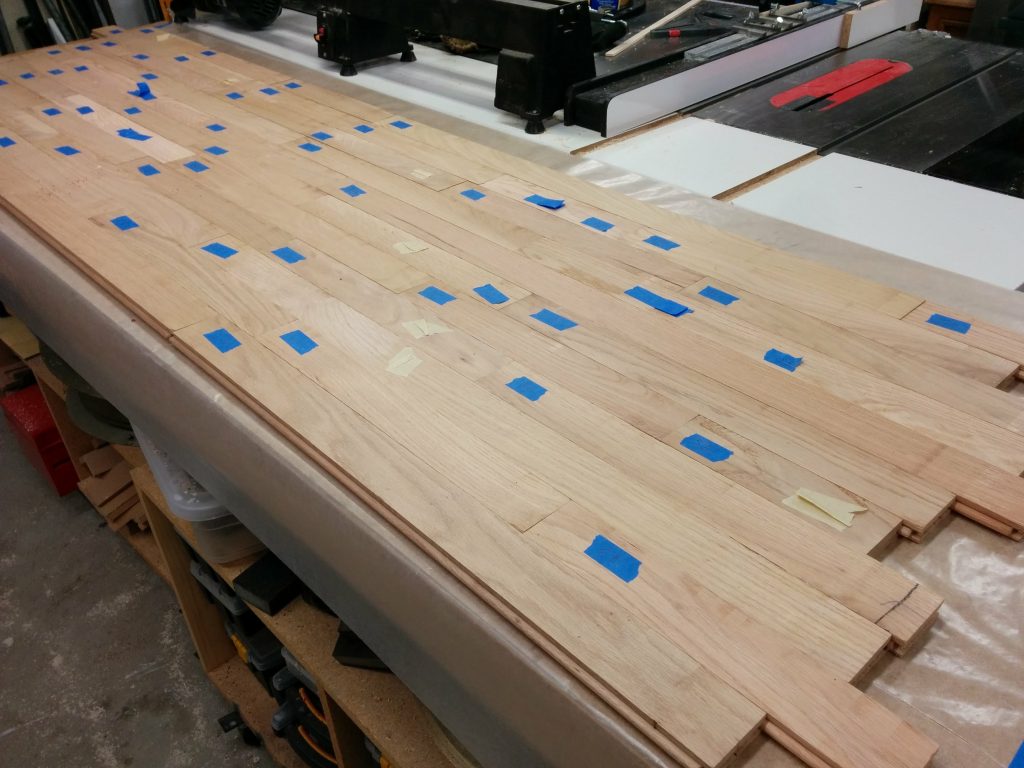
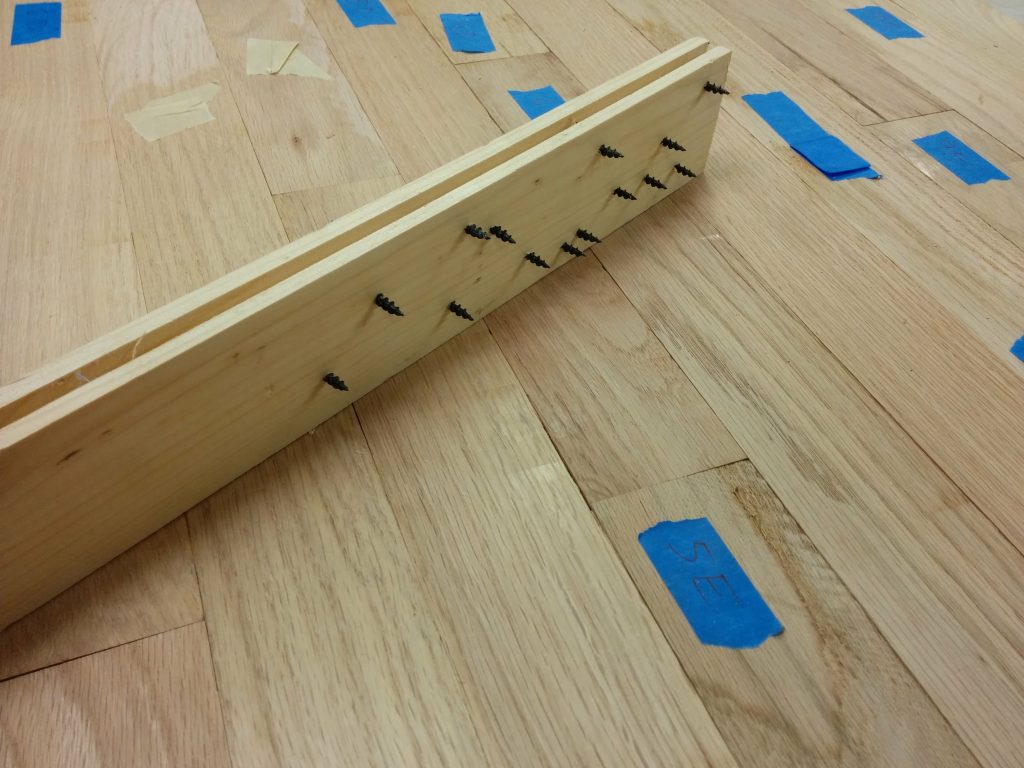
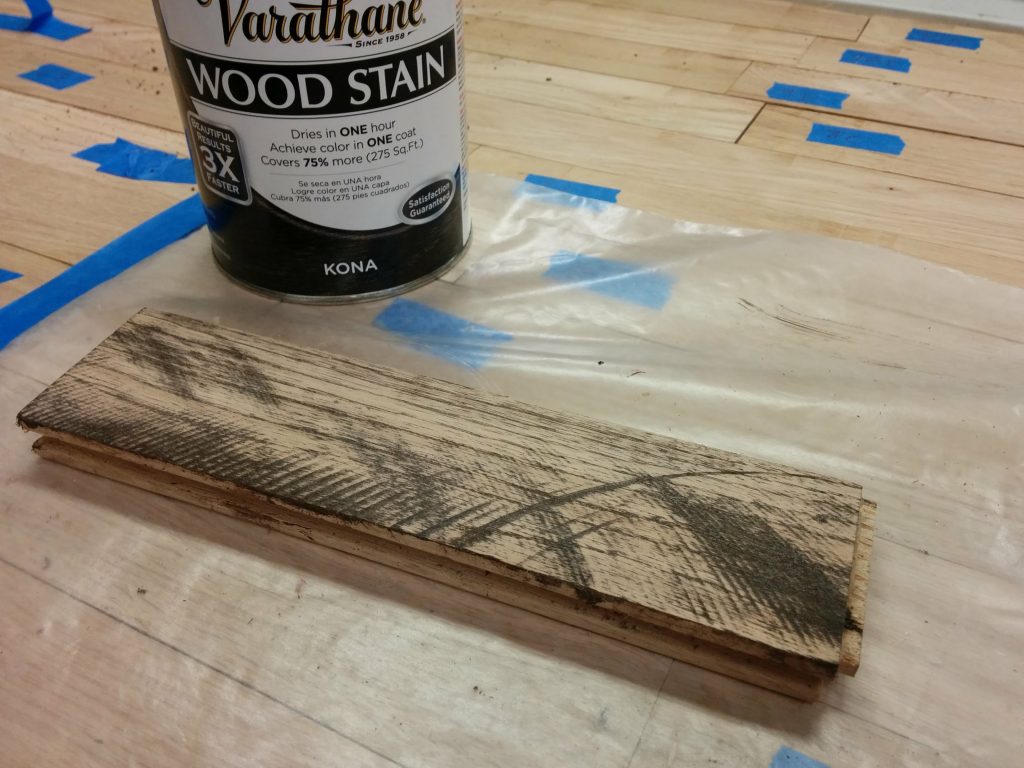
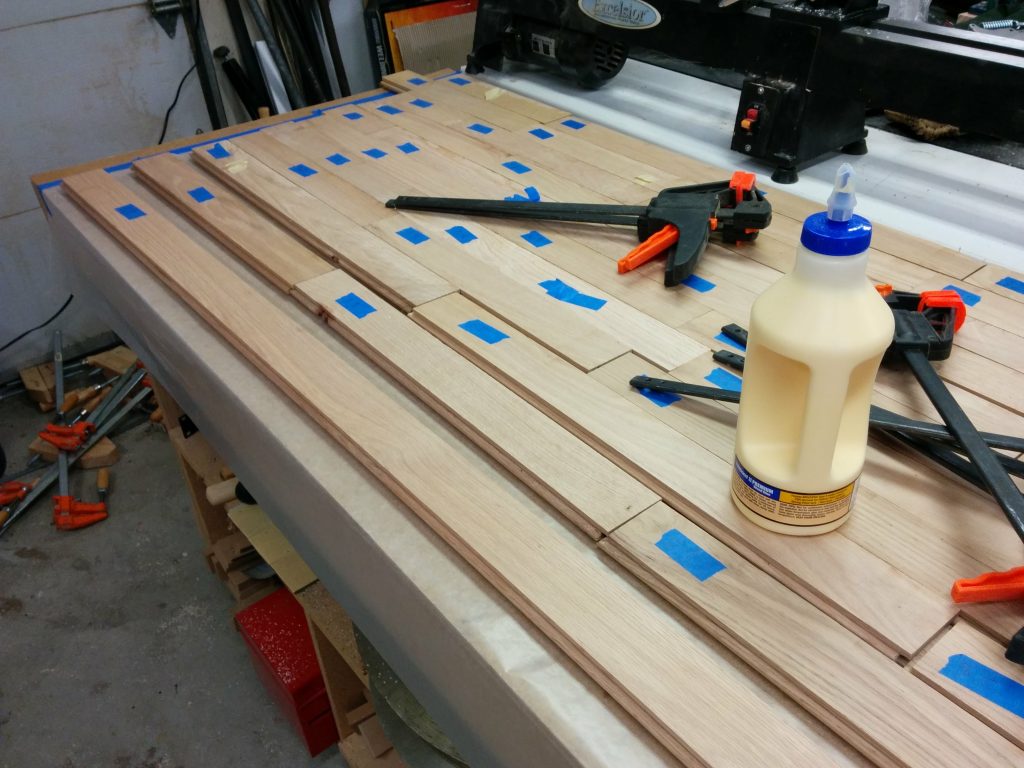
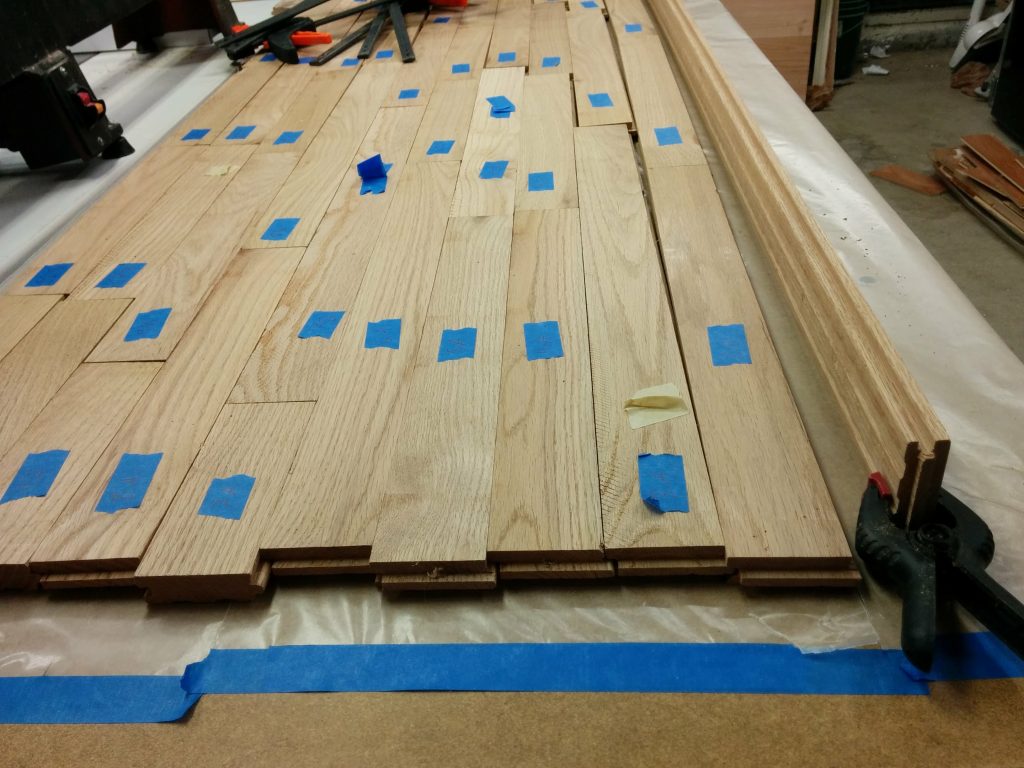
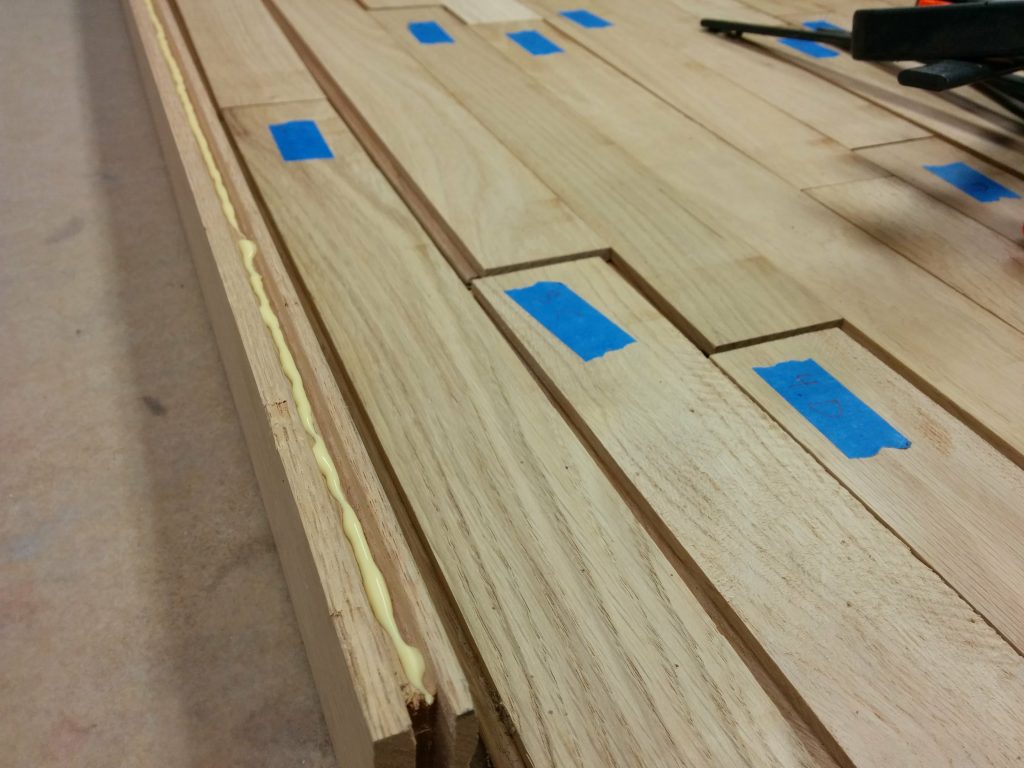
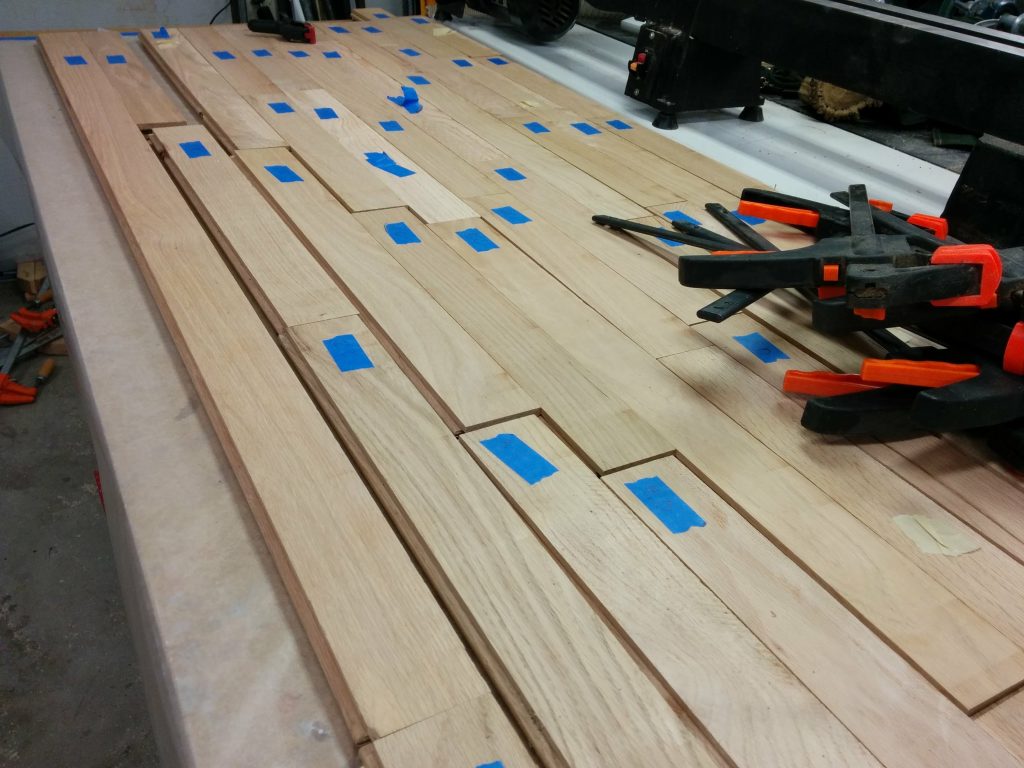
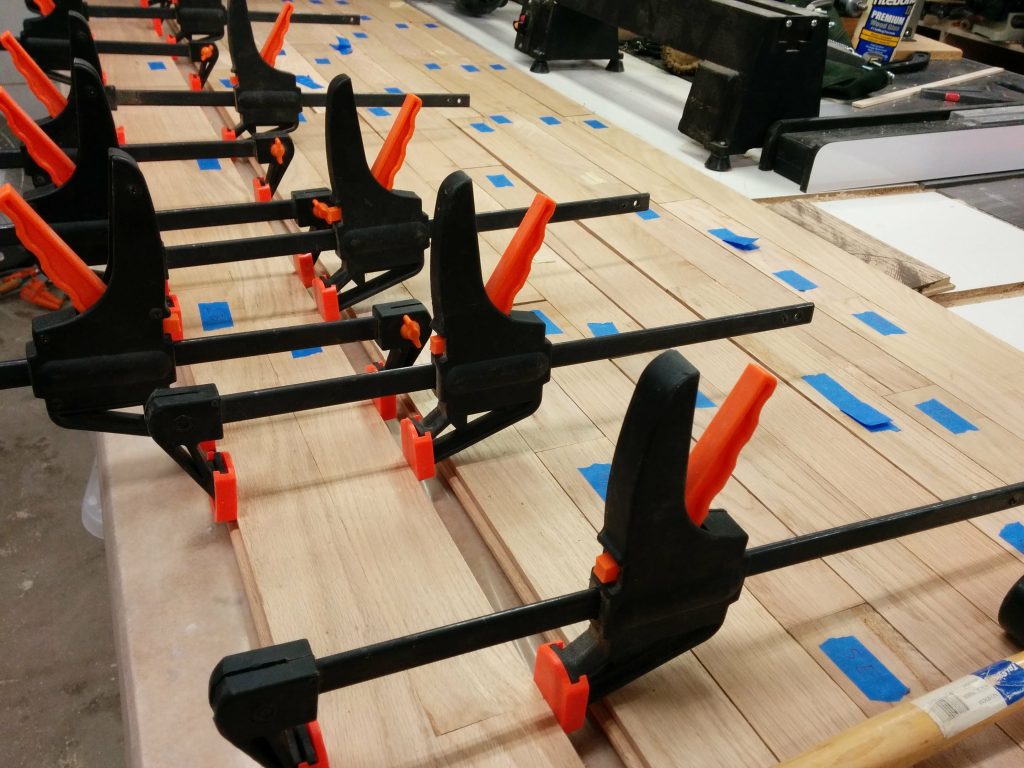
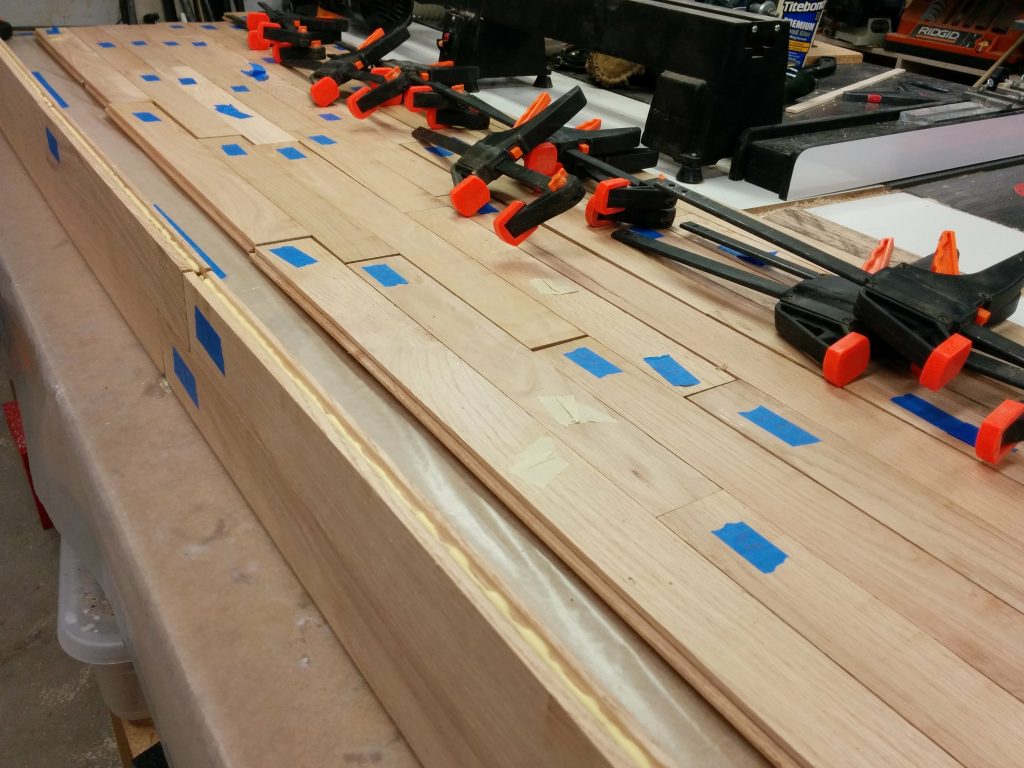
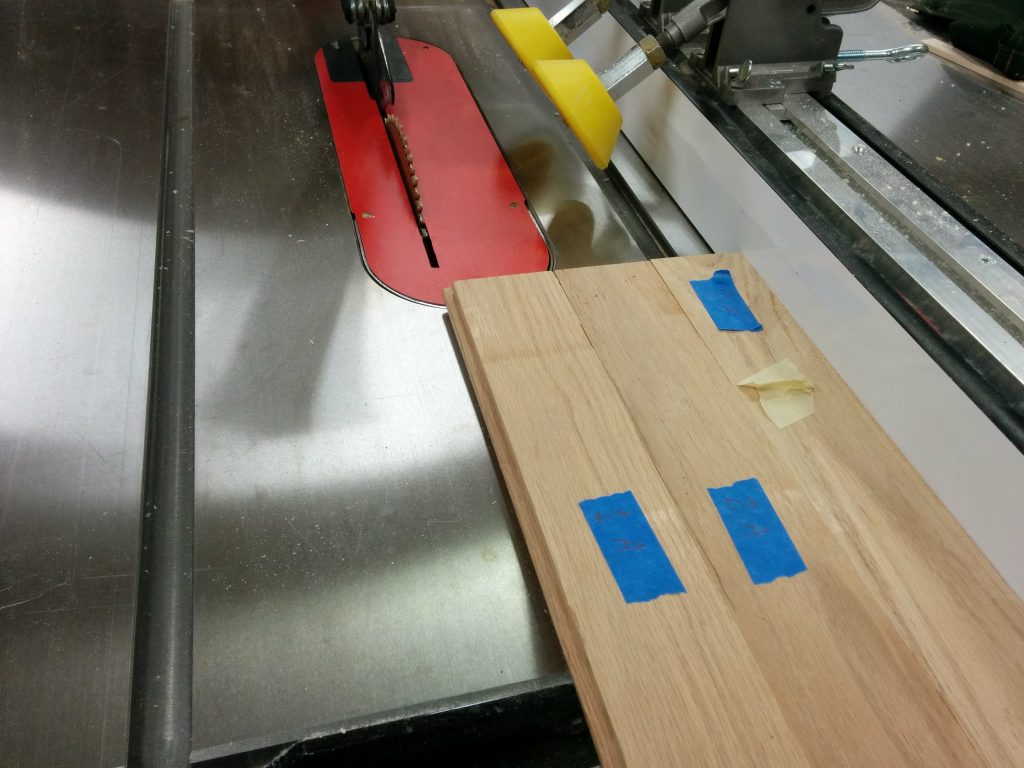
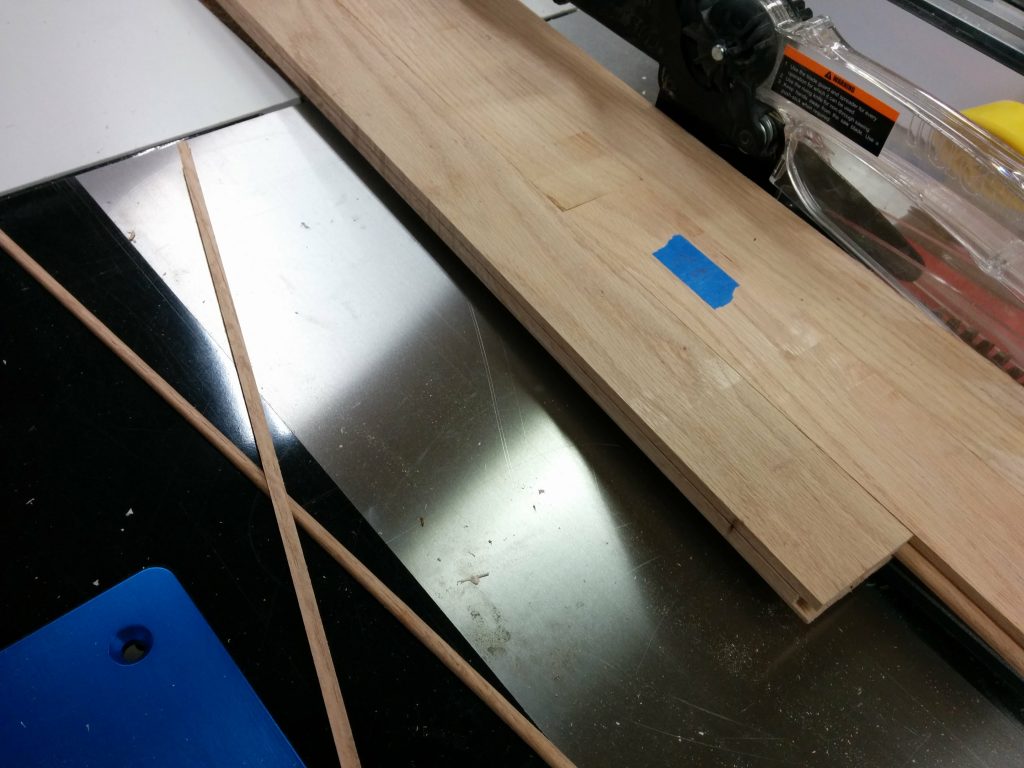
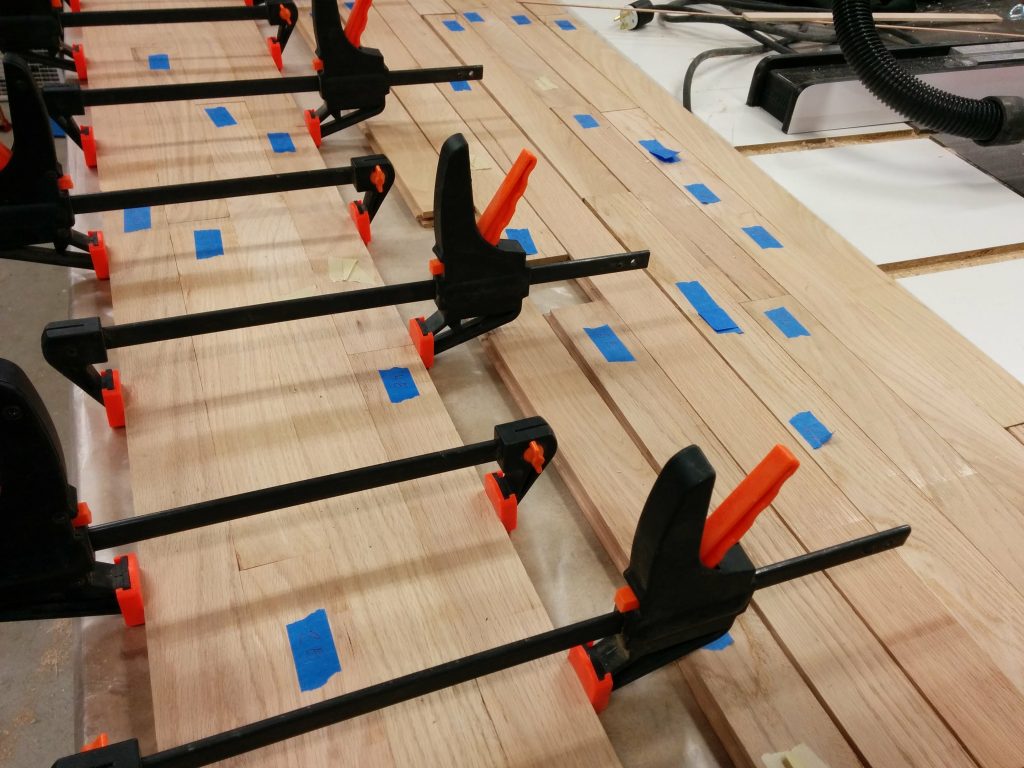

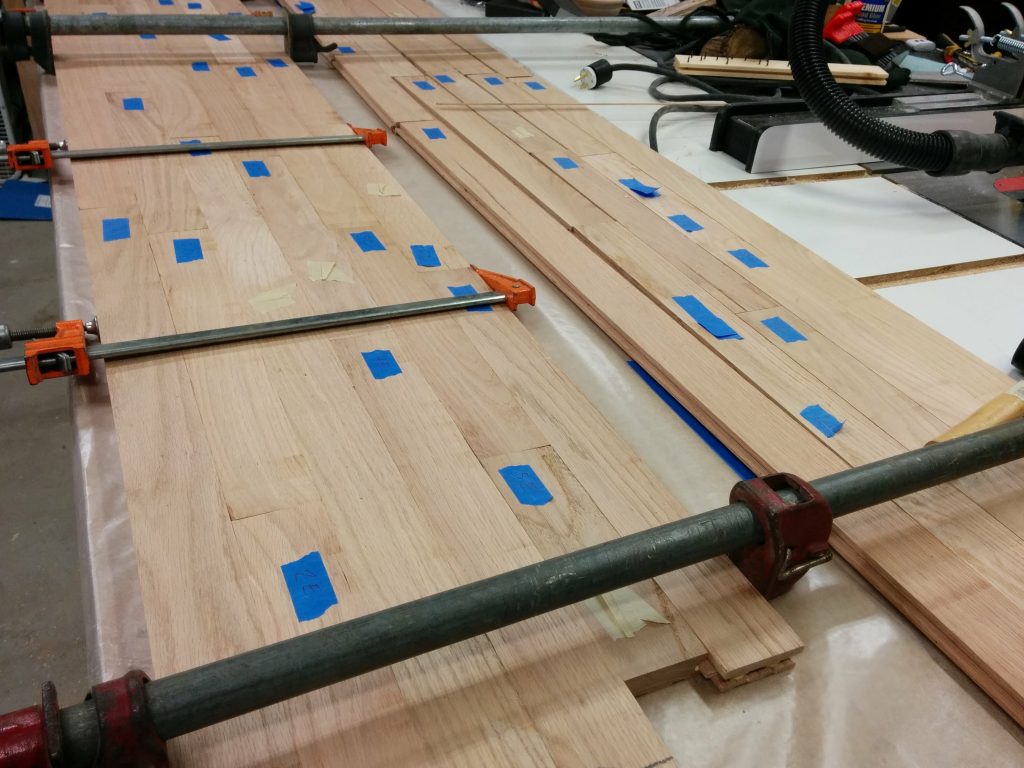
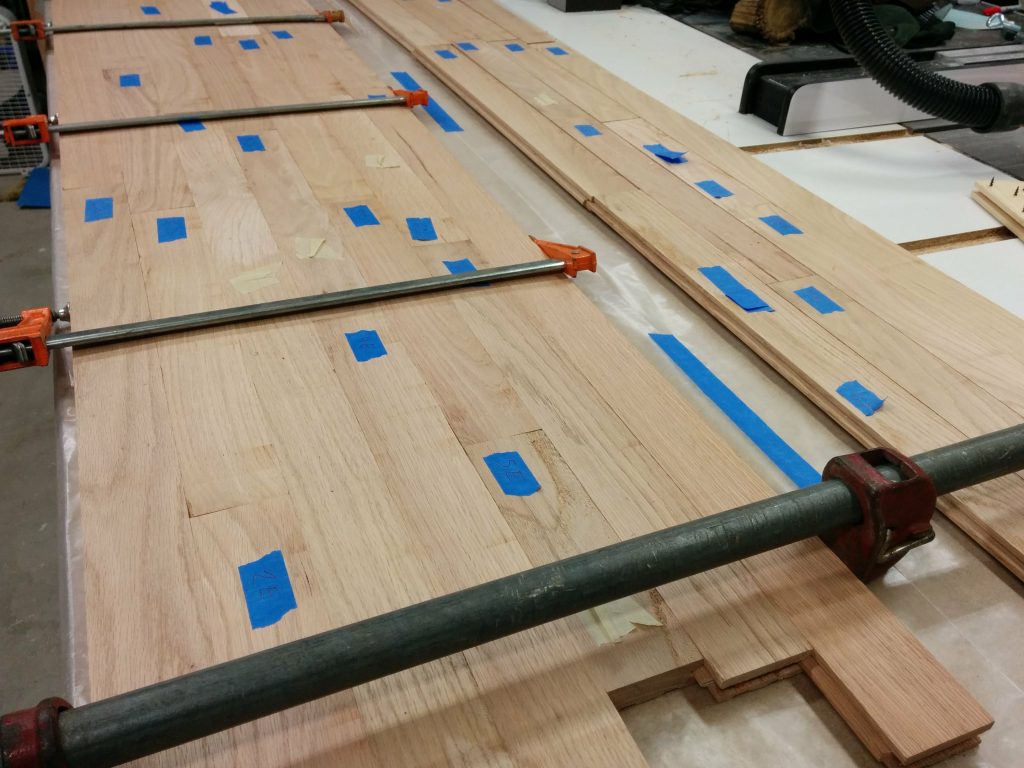
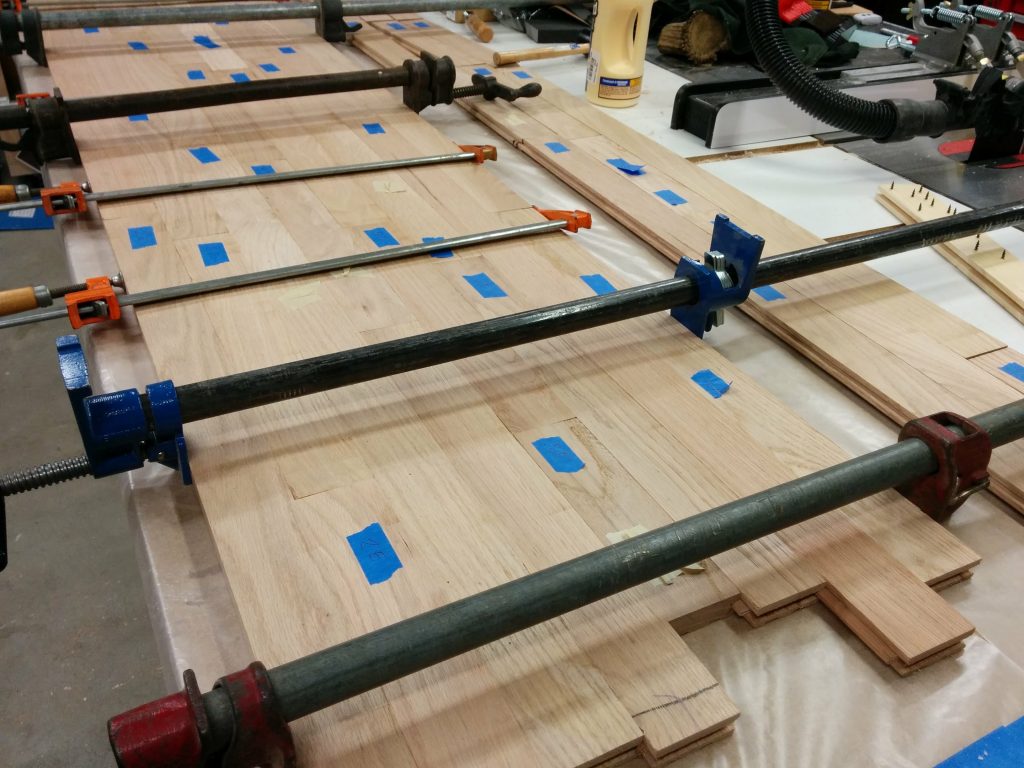
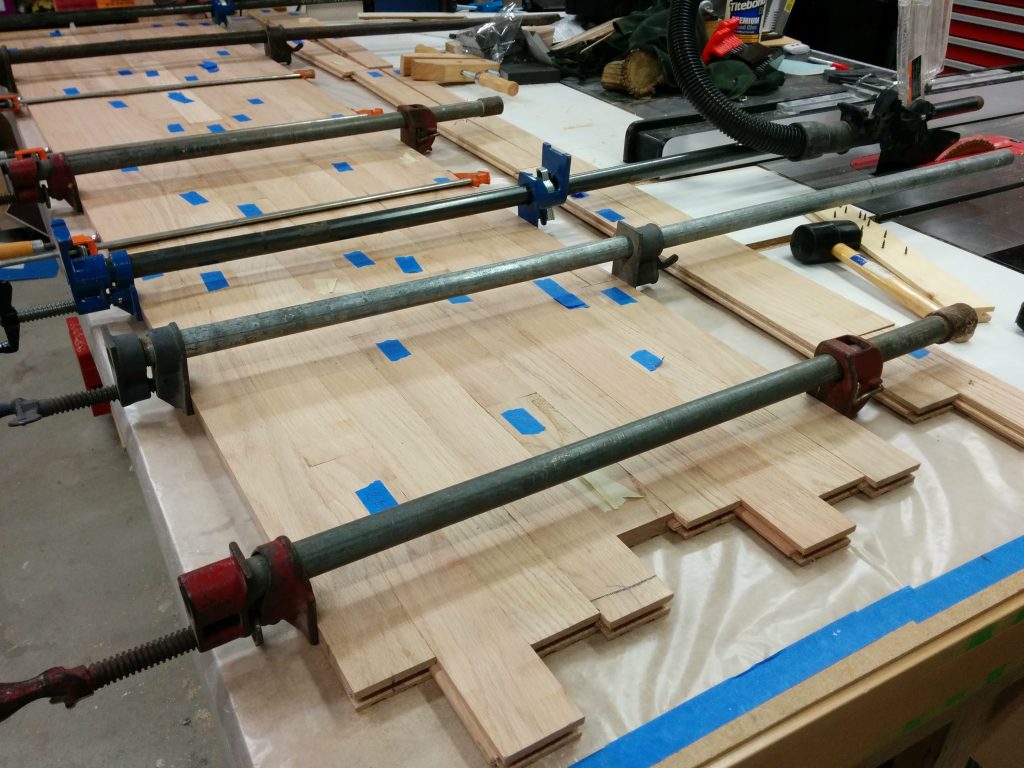
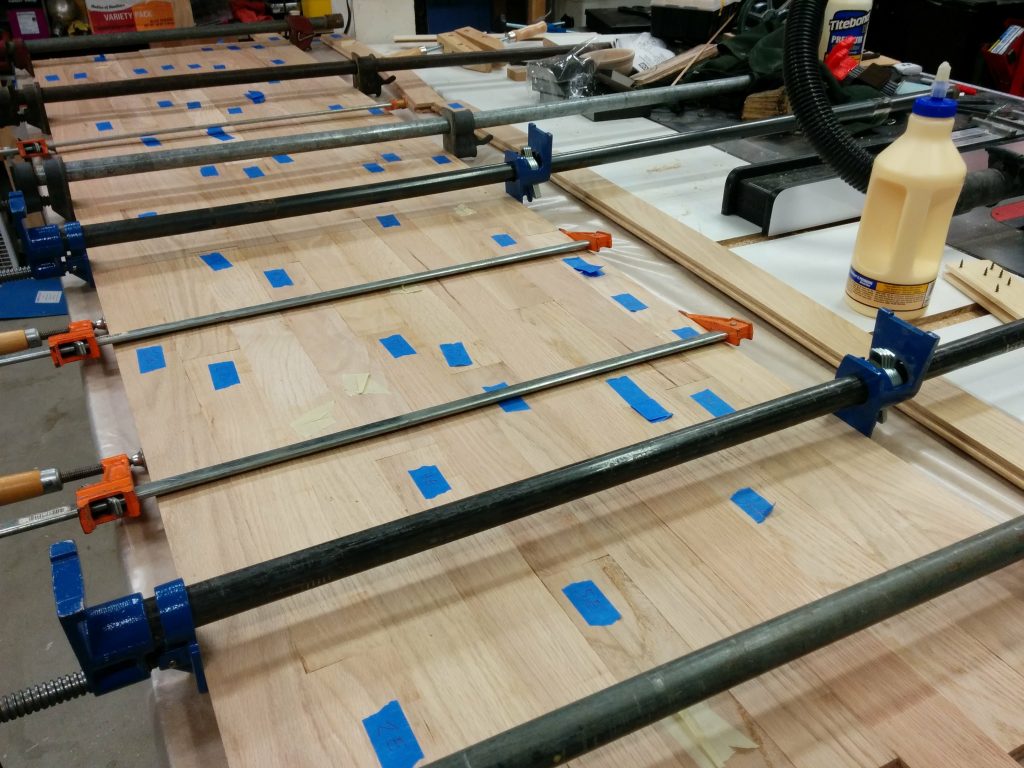
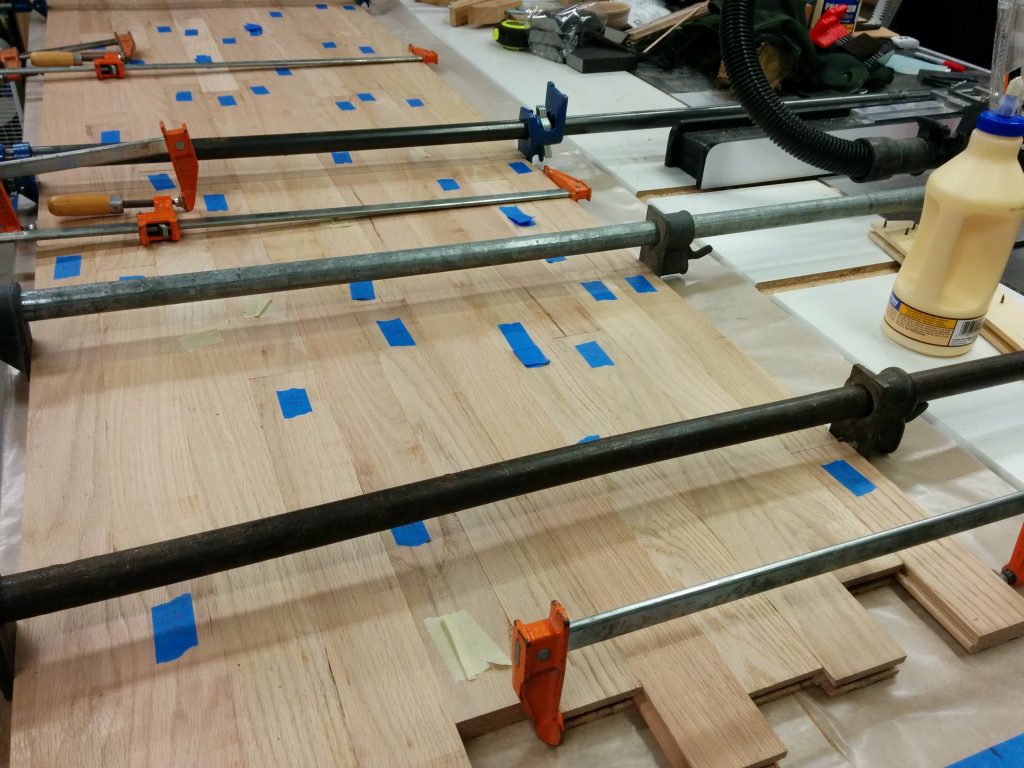
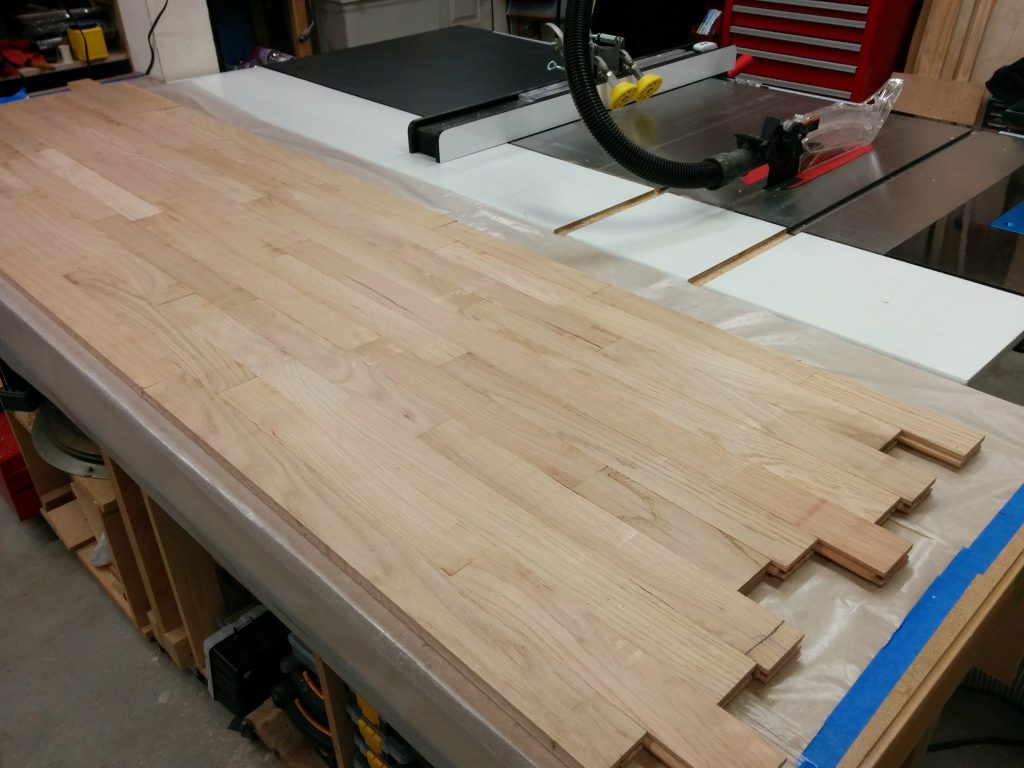
Pingback: Workbench: Part 3 – Change of plans – TrentDavis.net
Pingback: Workbench: Part 5 – Cutting the benchtop to size – TrentDavis.net
I plan on doing a similar bench top using 2X4’s under scrap maple flooring as the top of the surface. Given that the flooring has a rounded surface would it have been better to first plane your flooring pieces to get them flat?